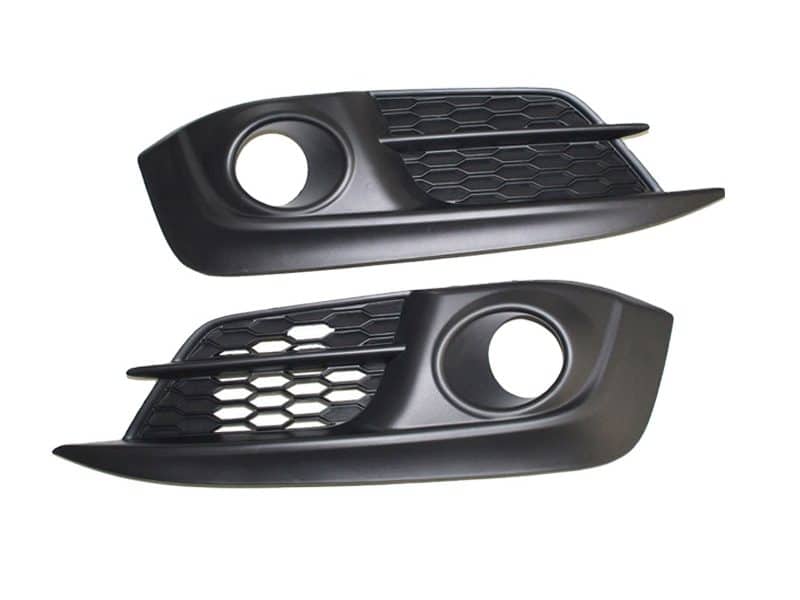
Ribs are thin support features frequently found in plastic injection moulded part designs. They are often used strategically to replace thick wall sections to avoid sink marks, warp, and voids, and help improve overall part function. In some cases, ribs also act as decorative features.
Designing ribs for plastic injection moulding
When to incorporate rib features in design
We’ve listed several scenarios below in which rib features work particularly well for:
Plastic parts that require maximum strength without increased wall thickness
Plastic parts that are subject to pressure, torsion and bending
Plastic parts that are complex and large
Plastic parts needing extra strength without increasing overall weight or material usage
To fully benefit from the capabilities of rib features, it is important that your injection mould model is designed according to a number of recommendations. This article covers the rib-to-wall ratio and recommended height, spacing, radii and other important considerations. It also offers a comprehensive guide to the best design practices to follow.
Rib Design Guidelines
Rib Height
Rib height should not exceed 3 times the nominal wall thickness. Ribs that are too long will increase the difficulty of injection moulding, causing problems like voids and sink marks. Ideally, you want to keep ribs as short as possible while still being functional.
Rib height and rib-to-wall ratio for plastic part designs
Rib Thickness
As a general rule of thumb, ribs should not be thicker than 60% of the nominal wall thickness. Maintaining an appropriate rib-to-wall ratio is essential to prevent issues such as air bubbles, shrinkage patterns and stress concentration. Ultimately, avoid thick ribs whenever possible.
Rib Radii
The base of a rib should always be rounded with a radius to prevent an area of concentrated stress in the part. This radius should typically be 0.5 to 1 times the thickness of the part wall to increase rib strength.
Rib Spacing
When incorporating multiple ribs, it’s recommended to space them out at least 2 to 3 times the nominal wall thickness. It’s essential to leave adequate space, as ribs placed too close together can create cooling issues, which can increase cycle times and sink risk.
Designing spacing for multiple ribs in injection moulding parts
Rib Draft
A draft angle of at least 0.5 degrees on each side should be incorporated to allow for easy part ejection from the mould. Only crush ribs should be made without a draft angle.
Summary of Rib Design Guidelines
Rib Height Should not exceed 3X the nominal wall thickness
Rib Thickness Should not exceed 60% of the nominal wall thickness
Rib Radii Should be 0.5 – 1X the nominal wall thickness
Rib Spacing Should be 2 – 3X the nominal wall thickness
Rib Draft Should be at least 0.5 degrees on each side
Injection moulding rib design best practices
Incorporating ribs is a critical feature that should be carefully considered for nearly all enclosures, housings, casings and other plastic parts where wall thickness is important. In order to ensure successful moulding of rib designs, it is important to closely follow best design practices.
Avoid Excessive Ribbing: Overloading a design with excessive ribs can significantly prolong cycle times, heighten ejection risks, and increase material usage. Instead, focus on strategic placement of ribs only where necessary to provide the required structural support while minimising these drawbacks.
Ensure Adequate Vents: It it essential properly vent around ribs in injection-moulded parts, as improper vent will cause excessive injection pressure, short shots, burn marks, sink and splay.
Maintain Uniform Wall Thickness: Variations in wall thickness can lead to uneven cooling rates, warping, and dimensional inaccuracies. Maintaining uniform wall thickness is crucial to enhance mould filling, minimize cycle times, and improve overall part quality and appearance.
Avoid Abrupt Transitions From Thin to Thick: Sudden changes in thickness from thin to thick sections can result in uneven filling, increased shrinkage, and potential defects such as sink marks or warping. Gradual transitions help promote uniform material flow and reduce stress concentrations.
Follow Rib Design Guidelines: Considering factors like rib height, length, placement, and orientation helps optimize part design for efficient moulding and superior mechanical properties.
XTJ is a leading OEM Manufacturer that is dedicated to providing one-stop manufacturing solutions from prototype to production. We are proud to be an ISO 9001 certified system quality management company and we are determined to create value in every customer relationship. We do that through collaboration, innovation, process improvements, and exceptional workmanship.

